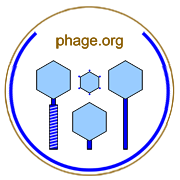

Prevention of infection of a lysogen by additional temperate phages as mediated by a prophage of the same immunity type.
Immunity is also described as homoimmunity and superinfection immunity. Alternatively, the term is occasionally used synonymously with superinfection exclusion (see below) and also to describe what is known as immunity to phage ghosts. Such extraneous usage should be discouraged, however, as both the concept and mechanisms of homoimmunity are well established.
Temperate phages differ in terms of their immunity types where phages of the same immunity type are said to be homoimmune to each other. By contrast, phages of different immunity types are said to be heteroimmune. Note that immunity is an intracellular process that follows both phage adsorption and phage-genome translocation and is based on prophage repressor action. See also immunity region and intemperate.
See also immunity group, immunity region, and, indeed, immunity terms.
Immunity should not be confused with exclusion, that is, superinfection exclusion, which is a means by which phages prevent the uptake of phage nucleic acid into already phage-infected bacteria. Immunity, by contrast, functions against nucleic acid that is already found within the infected bacterium's cytoplasm.
This is the definition from Adams (1959), p. 440, "Resistance to infection that does not result from failure of the phage to adsorb and inject, characteristically associated with the lysogenic state." Alternatively, from Gill and Young (2011), p. 402,"Bacterial insensitivity to a phage caused by lysogeny of the cell by the same or related phage; this term only relates to temperate phages."
For more on this topic, see Wikipedia, Google, and PubMed. Contact web master. Return to terms.